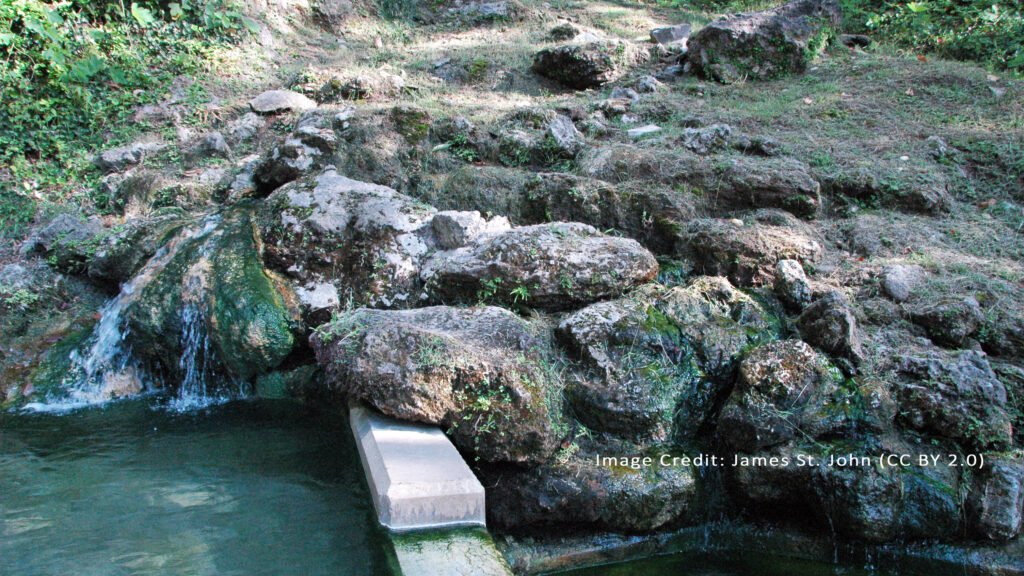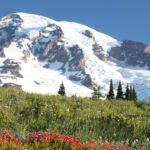Plan your visit to Hot Springs National Park in Arkansas! Explore scenic hiking trails, historic bathhouses, and rejuvenating thermal pools in this natural oasis.
Table of Contents
1. Introduction to the Hot Springs National Park
Nestled in the heart of Arkansas, Hot Springs National Park is a one-of-a-kind destination where nature, history, and wellness come together. Known as the “American Spa,” this iconic park is famous for its rejuvenating thermal pools and historic charm. With its scenic hiking trails, rich cultural significance, and unique geothermal features, Hot Springs National Park stands out as a must-visit spot for nature lovers, history enthusiasts, and those seeking relaxation.
Established in 1832, this park holds the distinction of being the first federally protected area in the United States, even predating Yellowstone National Park. Its warm, mineral-rich waters have attracted visitors for centuries, offering a natural remedy for relaxation and healing. Beyond its famed bathhouses, the park boasts a diverse landscape that includes rolling mountains, lush forests, and a variety of wildlife.
Whether you’re here to soak in the historic bathhouses of Hot Springs National Park, hike through the beautiful Hot Springs hiking trails, or simply immerse yourself in the beauty of the Ouachita Mountains, this destination promises an unforgettable experience. Keep reading to discover the best things to do, places to explore, and tips to make the most of your visit to Hot Springs National Park in Arkansas.
2. History and Significance
Hot Springs National Park in Arkansas is steeped in history and stands as a testament to the unique intersection of nature, wellness, and American heritage. Its story begins long before it was officially designated as a protected area, as Native American tribes were the first to recognize the therapeutic properties of the natural thermal pools. They referred to the springs as the “Valley of the Vapors” and considered them a sacred place for healing and peace.
In 1832, Hot Springs became the first federally protected land in the United States, nearly 40 years before Yellowstone was designated a national park. This early protection marked the beginning of the nation’s commitment to preserving its natural wonders. The site officially became Hot Springs National Park in 1921, solidifying its place as a significant landmark in American conservation history.
During the late 19th and early 20th centuries, the park gained fame as a destination for wellness and luxury. Historic Bathhouse Row, a collection of ornate bathhouses, became the centerpiece of the area. Visitors from across the country flocked to these establishments to experience the soothing mineral baths believed to cure various ailments. Today, some of these bathhouses have been restored and repurposed, offering a glimpse into the opulent past of spa culture in the U.S.
Beyond its cultural significance, the park plays a vital role in preserving the unique geothermal features of the region. The thermal springs emerge from the ground at an average temperature of 143°F (62°C), rich with minerals that have been filtered through ancient rock formations for thousands of years. These waters remain protected to ensure their natural purity and availability for future generations.
Hot Springs National Park is not just a place to visit—it’s a window into a fascinating chapter of American history. From its ancient roots to its evolution as a wellness hub, the park continues to captivate visitors with its enduring charm and unique legacy.
3. Top Attractions of Hot Springs National Park
Bathhouse Row: At the heart of the park lies Bathhouse Row, a historic collection of eight bathhouses that embody the grandeur of the early 20th century. These beautifully restored buildings are a testament to the park’s spa-town legacy. Today, visitors can step into the past with a tour of these iconic structures, some of which serve modern purposes:
- Quapaw Bathhouse offers thermal baths and spa services, allowing you to experience the healing properties of the mineral-rich waters.
- Fordyce Bathhouse, now the park’s visitor center, showcases the history of the bathhouses through exhibits and guided tours.
Thermal Pools and Springs: The thermal pools are the park’s most famous natural feature, drawing visitors for their therapeutic benefits. Although the springs themselves are protected and not for public bathing, the water is used in the bathhouses and for drinking at public fountains throughout the park. Don’t miss the chance to taste the pure, mineral-rich water from one of the iconic jug fountains like the Hot Water Cascade or the Display Spring.
Hiking Trails: For nature enthusiasts, the park offers a variety of hiking trails that wind through the stunning Ouachita Mountains. Popular trails include:
- Hot Springs Mountain Trail: A moderately challenging loop that provides breathtaking views of the city and surrounding mountains.
- Gulpha Gorge Trail: A peaceful, shaded hike perfect for those seeking a tranquil nature escape.
Hot Springs Mountain Tower: For the best view of the park, take a trip to the Hot Springs Mountain Tower. This 216-foot observation deck provides a bird’s-eye view of the Ouachita Mountains and the surrounding areas. It’s a fantastic spot for photography and offers a deeper appreciation of the park’s natural beauty.
Wildlife and Scenic Drives: Explore the park’s natural diversity with a scenic drive along the Hot Springs Mountain Drive or West Mountain Drive. These routes offer stunning views and opportunities to spot native wildlife such as deer, squirrels, and a variety of bird species.
Gulpha Gorge Campground: For those seeking an overnight adventure, the Gulpha Gorge Campground provides a serene place to stay amidst nature. Equipped with modern amenities, this campsite offers easy access to trails and the beauty of the park.
4. Outdoor Activities
Hiking Trails in Hot Springs National Park
The park is home to 26 miles of well-maintained hiking trails, ranging from easy walks to more challenging treks. These trails wind through the lush Ouachita Mountains, offering breathtaking views, diverse flora, and chances to encounter local wildlife.
- Hot Springs Mountain Trail: A popular 1.7-mile loop that takes hikers through forested terrain with spectacular overlooks of the city and surrounding mountains.
- Gulpha Gorge Trail: A short but serene hike, this trail connects to the campground and provides access to peaceful wooded areas.
- Goat Rock Trail: Known for its rocky outcrops and panoramic views, this trail is perfect for photography enthusiasts.
Scenic Drives
For those who prefer exploring from the comfort of their car, the park offers several scenic drives that showcase its natural beauty.
- Hot Springs Mountain Drive and West Mountain Drive take visitors along winding roads with stunning overlooks of the Ouachita Mountains. These drives are especially beautiful during the fall when the foliage bursts into vibrant colors.
Picnicking and Relaxation
The park provides designated picnic areas surrounded by tranquil natural settings. Popular spots like the Gulpha Gorge Campground offer tables, grills, and plenty of shade, making them perfect for a relaxing meal amidst the sounds of nature.
Wildlife Watching
Nature lovers will appreciate the chance to observe the park’s diverse wildlife. Keep an eye out for deer, squirrels, and a variety of birds, including woodpeckers and warblers, as you explore the trails and wooded areas. The early morning and late afternoon are the best times to spot animals in their natural habitat.
Photography Opportunities
With its scenic landscapes, historic architecture, and vibrant sunsets, Hot Springs National Park is a paradise for photographers. Capture panoramic views from the Hot Springs Mountain Tower or frame the cascading waters of the Hot Water Cascade for unforgettable shots.
Camping at Gulpha Gorge
For a true outdoor experience, spend the night under the stars at the Gulpha Gorge Campground. This well-equipped campsite features modern amenities like water and electric hookups while providing easy access to trails and natural beauty.
From adventurous hikes to peaceful picnics, the outdoor activities at Hot Springs National Park are as varied as its landscape. Whether you’re seeking an adrenaline-filled day on the trails or a quiet afternoon soaking in the beauty of nature, this park has something to offer every outdoor enthusiast.
You may also like Discover the Wonders of Yellowstone National Park, Wyoming: Ultimate Guide
5. Best Time to Visit Hot Springs National Park
Spring (March to May)
Spring is arguably the best time to visit Hot Springs National Park, thanks to mild temperatures and blooming wildflowers.
- Weather: Daytime highs range from 60°F to 80°F, making it ideal for outdoor activities like hiking and exploring Bathhouse Row.
- Why Visit: The park comes alive with colorful blossoms and lush greenery, offering picturesque views along trails like the Gulpha Gorge Trail.
- Tips: Spring is a popular time, so consider visiting on weekdays to avoid crowds.
Summer (June to August)
Summer brings warmer weather, perfect for enjoying shaded hiking trails or relaxing in the cool interiors of the historic bathhouses.
- Weather: Temperatures can climb to 90°F or higher, so plan outdoor activities early in the morning or late in the afternoon.
- Why Visit: Families flock to the park during summer vacations, making it a lively time to experience the attractions.
- Tips: Stay hydrated by carrying a reusable water bottle and filling it with refreshing thermal spring water from the park’s public fountains.
Fall (September to November)
Autumn is another favorite season for visitors, as the cooler temperatures and vibrant fall foliage make the park even more stunning.
- Weather: Temperatures typically range from 50°F to 75°F, creating comfortable conditions for hiking and scenic drives.
- Why Visit: The changing leaves add a spectacular backdrop to the Hot Springs Mountain Drive and West Mountain Drive.
- Tips: Don’t forget your camera to capture the breathtaking views of the Ouachita Mountains in their autumn hues.
Winter (December to February)
Winter offers a peaceful and quiet experience at the park, with fewer crowds and a serene atmosphere.
- Weather: Daytime highs average around 50°F, with cooler nights that are perfect for cozying up indoors.
- Why Visit: It’s a great time to explore the bathhouses on Bathhouse Row or enjoy the thermal pools without the hustle and bustle of peak seasons.
- Tips: Pack warm layers and plan for indoor activities if the weather turns chilly.
When to Avoid Crowds
For those looking to enjoy the park in solitude, plan your visit during the winter months or mid-week during spring and fall. Mornings are generally quieter, regardless of the season, making them the perfect time to explore the trails or enjoy a spa treatment.
6. Visitor Tips
What to Wear and Pack
Comfortable clothing and sturdy footwear are essential, especially if you plan to hike. Here’s a quick checklist:
- Wear layers to adapt to changing weather, especially in the mountains.
- Bring a reusable water bottle to stay hydrated—refill it at the park’s public water fountains offering pure thermal spring water.
- Don’t forget sunscreen, sunglasses, and a hat to protect against the sun.
Click here to visit the official park website.
Navigating the Park
- Start your visit at the Fordyce Bathhouse Visitor Center to get a map, learn about the park’s history, and plan your itinerary.
- Take advantage of the free parking areas near Bathhouse Row, but arrive early during peak seasons to secure a spot.
Exploring the Bathhouses
- Make reservations in advance for spa services at the Quapaw Bathhouse or Buckstaff Bathhouse, as these are popular experiences.
- The Fordyce Bathhouse is open for self-guided tours, giving you insight into the park’s history.
Hiking Tips
- Stick to marked trails and carry a trail map or use GPS to avoid getting lost.
- Start hikes early in the morning to beat the heat and enjoy quieter trails.
- Watch for wildlife, but keep a safe distance from animals.
Drinking Thermal Spring Water
Don’t miss the chance to drink the park’s famed mineral-rich water. Bring a jug or bottle and fill it up at one of the designated public fountains, such as the Hot Water Cascade or Jug Fountain. The water is safe, pure, and said to have health benefits.
Accessibility
- The park offers wheelchair-accessible facilities, including the Fordyce Bathhouse and some areas of Bathhouse Row.
- Many trails, such as the Grand Promenade, are paved and accessible for those with mobility challenges.
Nearby Accommodations and Dining
Hot Springs National Park is conveniently located near downtown Hot Springs, where you’ll find a variety of accommodations, from cozy bed-and-breakfasts to boutique hotels. For dining, try local favorites like barbecue, Southern comfort food, or even a meal at the historic Arlington Hotel.
Park Rules and Etiquette
- Protect the park’s natural beauty by staying on trails and disposing of trash responsibly.
- Avoid touching or disturbing the thermal springs, as they are fragile natural features.
- Follow all posted signs and park regulations to ensure a safe visit for everyone.
By keeping these tips in mind, you’ll be well-prepared to enjoy all that Hot Springs National Park has to offer. From soaking in history at Bathhouse Row to hiking through breathtaking landscapes, your visit to this iconic Arkansas destination will be one to remember.
Hot Springs National Park in Arkansas is a destination like no other, blending natural beauty, rich history, and opportunities for relaxation. From the rejuvenating thermal pools and historic charm of Bathhouse Row to the breathtaking hiking trails and scenic drives through the Ouachita Mountains, this park offers something for everyone. Whether you’re a history buff, a nature enthusiast, or simply looking for a peaceful escape, Hot Springs National Park promises an unforgettable experience. Plan your visit today and discover why this unique destination continues to captivate travelers from around the world.







